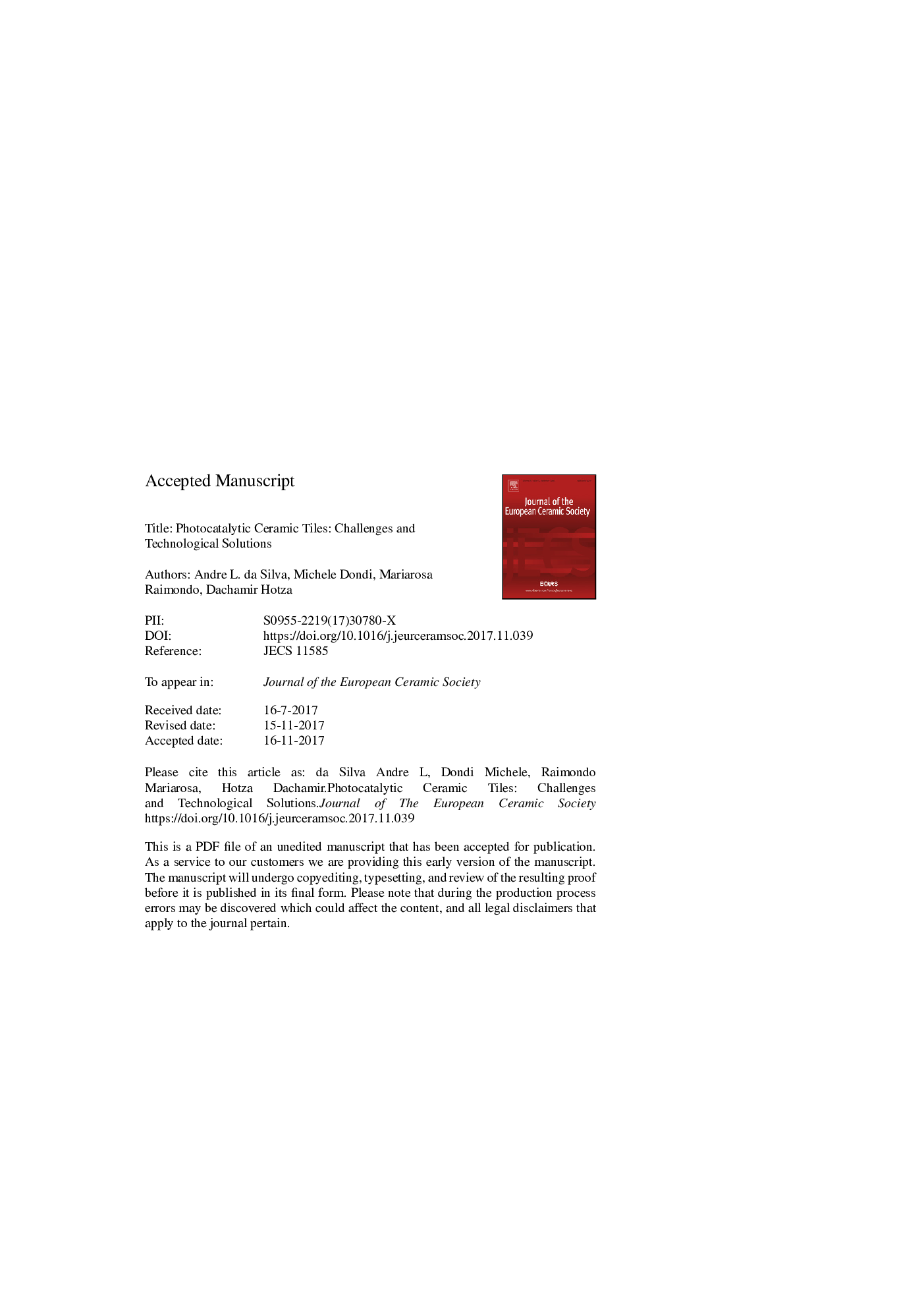| Article ID | Journal | Published Year | Pages | File Type |
|---|---|---|---|---|
| 7898450 | Journal of the European Ceramic Society | 2018 | 49 Pages |
Abstract
Titania-functionalized ceramic tiles are gaining space on the market of the self-cleaning photocatalytic building materials after a decade of industrial attempts and investigation on different technological issues. The present paper overviews the latest research on photocatalytic ceramic tiles in terms of process parameters, durability, cleanability and photoactivity, addressing challenges and solutions reported by academic and industrial sources. A special attention is paid to the superhydrophilicity and photocatalytic performance achievable on ceramic surfaces and their complex dependence on several factors (titania crystalline phase, deposition technique; firing temperature; thickness, roughness, specific surface area of the photoactive film; and so on). In particular, the methods used to deposit the titania layer, its degree of adhesion and effects on tile appearance (color, brightness, and roughness) are reviewed. Moreover, manufacturing a photocatalytic ceramic tile with a single firing step is still a challenge. Despite the international standards available on photocatalytic performance, the experimental parameters from one research to another may be quite different, therefore a performance comparison becomes virtually impossible. Nevertheless, among the available commercial products declared as photocatalytic ceramic tiles, just some of them revealed to be photoactive. From the data available, superhydrophilicity of tiles corresponded to contact angles with water in the 10-15° range. Specific photoactivity measured as methylene blue (MB) degradation resulted typically in the 2.8-3.4 mol/m2h range; photonic efficiency was between 0.025 and 0.030%; while MB index was in the 15-20 range. Finally, the relationship of dye degradation with the self-cleaning property is also a question that remains unanswered.
Related Topics
Physical Sciences and Engineering
Materials Science
Ceramics and Composites
Authors
Andre L. da Silva, Michele Dondi, Mariarosa Raimondo, Dachamir Hotza,
